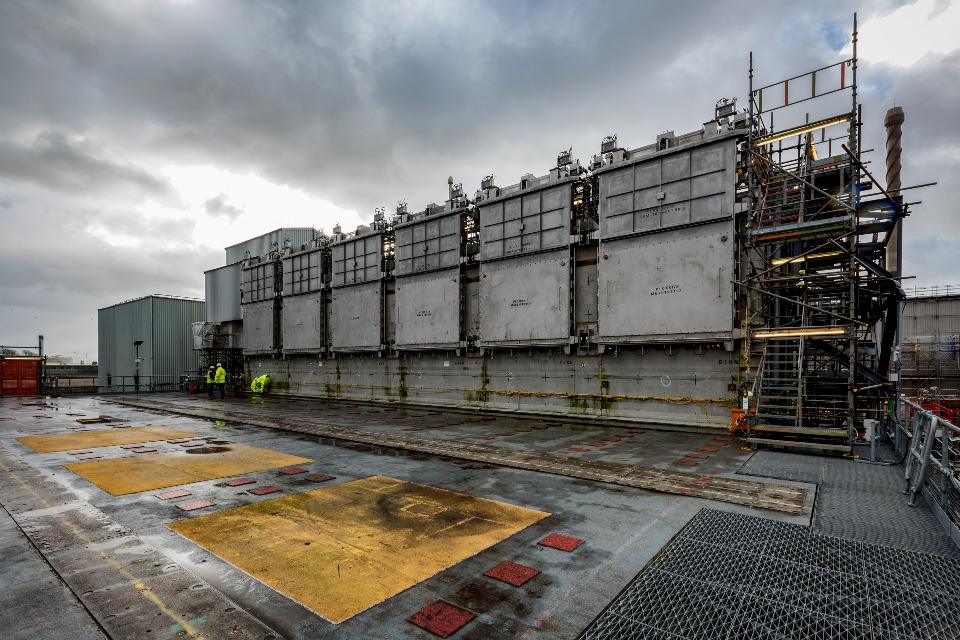It's a plan that's been decades in the making but this week saw the achievement of a momentous milestone in the decommissioning story at Sellafield as the first batch of waste was successfully retrieved from the site's oldest waste store.
After weeks of preparation and checks, the Pile Fuel Cladding Silo retrievals team gathered around the monitors in the control room of the 70-year-old plant to witness the moment a state-of-the-art robotic arm reached into the silo to remove and repackage waste for the first time.
Built in the 1950s to store cladding from used nuclear fuel from the Windscale Piles - the first nuclear reactors to be built at Sellafield - the vast concrete silo was designed as a 'locked vault' with no plan for how to retrieve its contents or decommission the building.
Cladding is the term used for the metal casing that surrounded the uranium fuel rods that were loaded into nuclear reactors. After the rods had been used in the reactors the cladding was peeled away so the fuel inside could be reprocessed. Today we class this cladding as intermediate-level nuclear waste.
After almost 20 years of operations the silo's 6 compartments were filled and it stopped receiving waste in the early 1970s.
In the years that followed the building underwent several upgrades to ensure it could continue to store its contents safely while a plan for retrievals was developed.
Today it represents one of the most complex and difficult decommissioning challenges in the world and one of the highest priorities for Sellafield Ltd and the Nuclear Decommissioning Authority (NDA).
In the last decade a giant concrete superstructure has been built around the silo and specially engineered shield doors have been installed on each of its 6 compartments. In 2017 holes were successfully cut in the top of each compartment, allowing access to the waste for the first time in 65 years.

The 6 large shield doors which were attached to the side of the silo.
Working in collaboration with Bechtel Cavendish Nuclear Solutions, Sellafield Ltd then designed, manufactured, tested, and installed 9 huge modules containing the machinery needed to empty the silo.
Successful testing of the robot grab was carried out earlier this month, paving the way for the historic achievement of the first waste retrievals from the silo.
Operators used the grab to remotely reach into the silo and pick up the waste before loading it into a specially designed stainless-steel box.
Once filled the box will be loaded into a shielded flask and transported to a brand new, fit-for-purpose store called the Box Encapsulation Plant Product Store.
Retrievals from the silo mark a significant step forward in the clean-up and decommissioning of one of the most hazardous buildings on the Sellafield site.
Euan Hutton, chief executive officer of Sellafield Ltd said:
The first retrievals from the Pile Fuel Cladding Silo are a huge step towards delivering our purpose of creating a clean and safe environment for future generations.
This achievement means that for the first time ever Sellafield is retrieving waste from all four of our legacy ponds and silos.
This represents the culmination of years of effort by hundreds of people throughout our organisation and contractor community. I am enormously proud of all of them.
David Peattie, NDA chief executive officer, said:
This is an important milestone, demonstrating tangible progress in delivering our mission and cleaning up some of our most hazardous legacy waste.
It's progress that has been years in the making and has been driven forward by skilled, industry leading specialists working collaboratively.
The ability to now retrieve waste from all four legacy ponds and silos at Sellafield is a huge achievement and I'd like to extend my congratulations and gratitude to everyone involved.
Mike Higgins, Pile Fuel Cladding Silo programme manager for Bechtel Cavendish Nuclear Solutions, said:
Getting to this position, over the last 12-years, is testament to the hard work, dedication and collaboration of the team, our joint venture partners Cavendish Nuclear, alongside our customer and all our supply chain partners.
Paul Dicks, Office for Nuclear Regulation director of regulation - Sellafield, Decommissioning Fuel and Waste, said:
Ensuring that legacy waste is safely removed from the Pile Fuel Cladding Silo and placed into storage facilities that meet modern safety standards is a priority for ONR.
Our team of specialist inspectors rigorously assessed Sellafield's safety case submission until we were satisfied that it was safe for retrievals to commence from the facility, and we will continue a programme of regulatory oversight.






